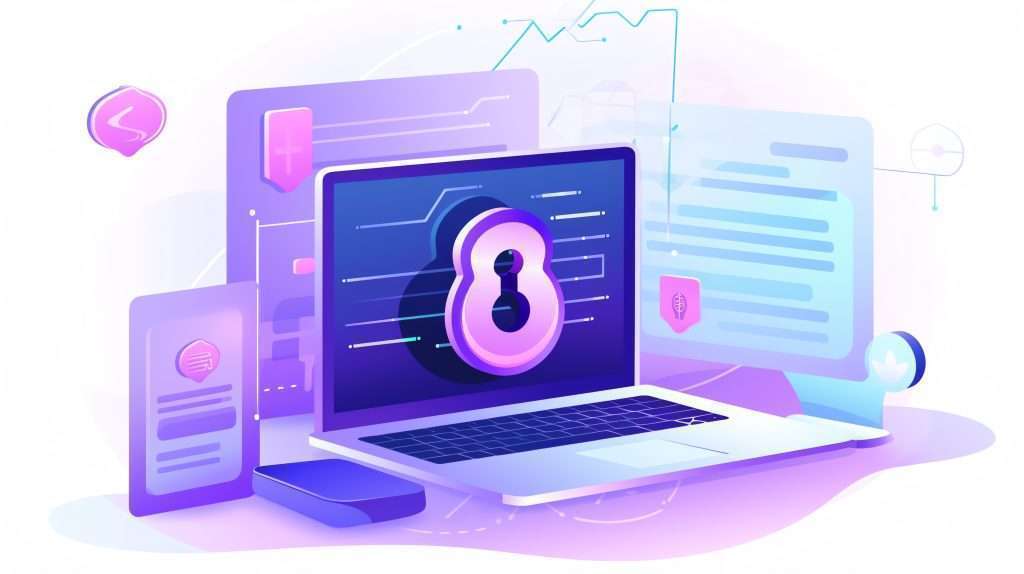In today’s digital age, cybersecurity for small businesses has become a pressing issue. The stakes are uniquely high for small businesses—nearly 70% become targets for cyberattacks, and without a robust cybersecurity plan, 60% of them may close within six months of an attack. This post will explore the top cybersecurity threats for small businesses today. It provides actionable cybersecurity tips for small businesses to help safeguard your operations and ensure a secure future.
Understanding Top Cybersecurity Threats for Small Businesses
Cybercriminals perceive small businesses as easy targets for several reasons. Firstly, many small enterprises lack robust security infrastructure and protocols, making them more susceptible to breaches. Secondly, small businesses often store valuable customer data that cybercriminals exploit for financial gain. Finally, limited cybersecurity awareness among small business owners and employees can result in negligence and weak defenses.
To counter these threats, every small business should implement basic cybersecurity measures. These include firewalls, antivirus software, and secure network configurations. Regularly updating software and hardware is essential to patch known vulnerabilities. Additionally, cultivating a cybersecurity-aware culture among employees is crucial for maintaining strong defenses. Training sessions and workshops can empower staff to recognize potential threats and act accordingly.

Top Cybersecurity Threats Facing Small Businesses
Small businesses face a range of cybersecurity threats that can compromise their operations and reputation. Understanding these threats is the first step towards effectively addressing them.
Phishing Attacks
Phishing attacks are deceptive attempts to obtain sensitive information by masquerading as legitimate entities. Cybercriminals use email, phone calls, or text messages to trick employees into divulging login credentials or clicking malicious links. The impact of phishing on small businesses can be devastating, leading to data breaches and financial losses.
To prevent phishing attacks, employee training is paramount. Educating staff to recognize suspicious emails and exercise caution when sharing information is crucial. Implementing anti-phishing tools and multi-factor authentication adds an extra layer of protection, reducing the risk of unauthorized access.
Ransomware Attacks
Ransomware is a malicious software that encrypts a business’s data, rendering it inaccessible until a ransom is paid. Small businesses are prime targets for ransomware due to their perceived inability to recover without paying. The consequences of a ransomware attack can be severe, including data loss and reputational damage.
To protect against ransomware, regular data backups are essential. Backups should be stored offsite or in the cloud to ensure their safety. Antivirus software can detect and neutralize ransomware before it does harm. Employee awareness is equally vital—training them to avoid suspicious downloads or links can prevent ransomware from infiltrating your system.
Insider Threats
Insider threats arise when individuals within the organization—employees, contractors, or business partners—misuse their access to company resources. These threats can be intentional or accidental and pose significant risks to small businesses.
Preventing insider threats requires monitoring and access control. Regular audits help identify unusual activities, while fostering a culture of trust can discourage malicious behavior. Restricting access to sensitive information based on roles and responsibilities further minimizes potential risks.
Weak Passwords and Credential Stuffing
Weak passwords are a common vulnerability that cybercriminals exploit through credential stuffing attacks. This method involves using stolen usernames and passwords to gain unauthorized access to multiple accounts.
To strengthen password security, encourage the use of strong, unique passwords for each account. Multi-factor authentication adds an additional layer of security, requiring verification beyond just a password. Password managers can help employees manage and generate secure passwords, reducing the likelihood of credential stuffing attacks.
Malware and Viruses
Malware and viruses are malicious software that infiltrate systems, causing disruptions and data breaches. They often enter through infected email attachments, downloads, or compromised websites.
Defending against malware requires installing reliable antivirus software and regularly updating it to detect new threats. System updates are equally important to patch vulnerabilities that malware might exploit. Employees should exercise caution when opening emails or downloading files from unknown sources to prevent malware infections.
Distributed Denial-of-Service (DDoS) Attacks
DDoS attacks disrupt business operations by overwhelming a website or network with excessive traffic, rendering it unavailable to users. The impact of prolonged downtime on small businesses can be financially crippling.
Mitigating DDoS attacks involves employing DDoS protection services that detect and block malicious traffic. Having redundant systems and a disaster recovery plan ensures business continuity during an attack. Regular testing of these plans is essential to identify potential weaknesses and improve response strategies.
Cloud Vulnerabilities
While cloud computing offers numerous benefits, it also poses security challenges. Misconfigurations and unauthorized access are common risks associated with cloud services.
Securing cloud data requires strong encryption to protect sensitive information during transmission and storage. Conducting regular security assessments helps identify and rectify vulnerabilities. Choosing reputable cloud service providers with a strong focus on security ensures that your data is in safe hands.
Social Engineering Attacks
Social engineering attacks rely on human manipulation to gain unauthorized access to information. Impersonation and deception are common tactics used to exploit employees’ trust.
Preventing social engineering attacks involves comprehensive employee training. Teaching staff to verify requests for information and to question unusual requests reduces the likelihood of successful attacks. By fostering a security-conscious culture, employees become vigilant guardians against social engineering threats.
IoT (Internet of Things) Vulnerabilities
The increasing adoption of IoT devices in small businesses presents new security risks. These devices often lack robust security measures, making them susceptible to attacks.
Securing IoT devices starts with using strong passwords and changing default settings. Network segmentation isolates IoT devices from critical systems, limiting potential damage. Regular firmware updates ensure that devices are equipped with the latest security patches.
The Importance of Cybersecurity Awareness for Small Businesses
Cybersecurity awareness is the foundation of an effective defense strategy. Employees play a pivotal role in safeguarding a business’s assets.
Building cybersecurity awareness involves regular training sessions that highlight emerging threats and best practices. Encouraging staff to identify and report suspicious activities fosters a collaborative approach to security. A culture of awareness empowers employees to become proactive defenders against cyber threats.
Cybersecurity Solutions for Small Businesses
Small businesses have access to a range of cybersecurity services for small businesses designed to meet their specific needs. Professional cybersecurity services offer comprehensive protection against evolving threats.
Investing in cybersecurity solutions provides peace of mind and reduces the risk of costly breaches. Services such as network monitoring, threat detection, and incident response ensure that businesses are prepared to handle any cybersecurity challenge.
Conclusion
In conclusion, understanding and addressing cybersecurity threats is essential for small businesses to thrive in the digital landscape. By implementing the right strategies and solutions, businesses can protect their assets, maintain their reputation, and ensure a secure future. Small business owners, IT professionals, and entrepreneurs must remain vigilant and proactive in their cybersecurity efforts. For personalized cybersecurity solutions tailored to your business needs, contact us today. Together, we can create a safer digital environment for your enterprise.
